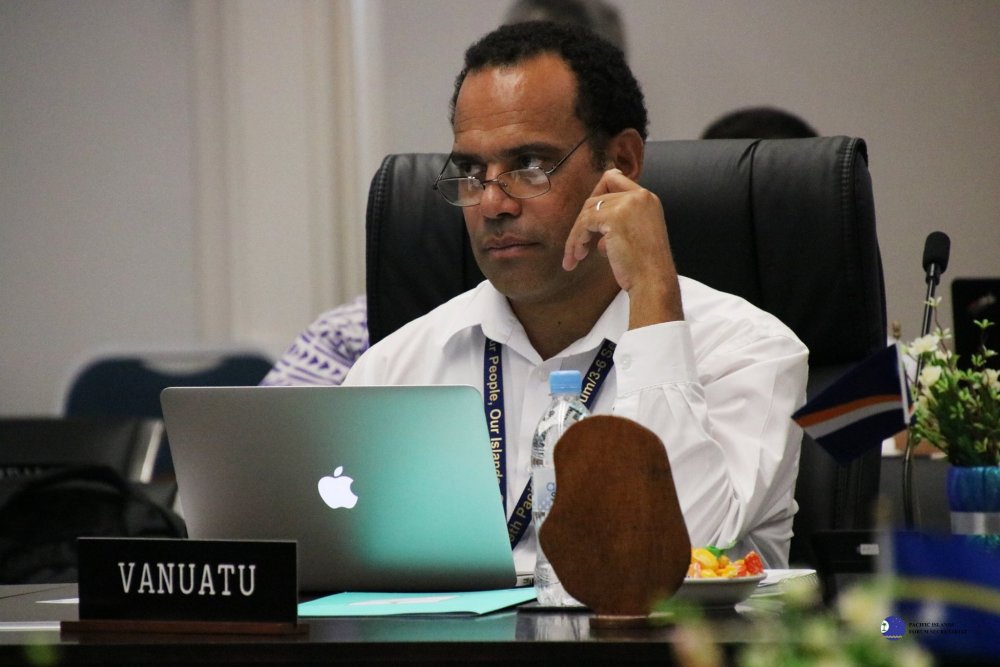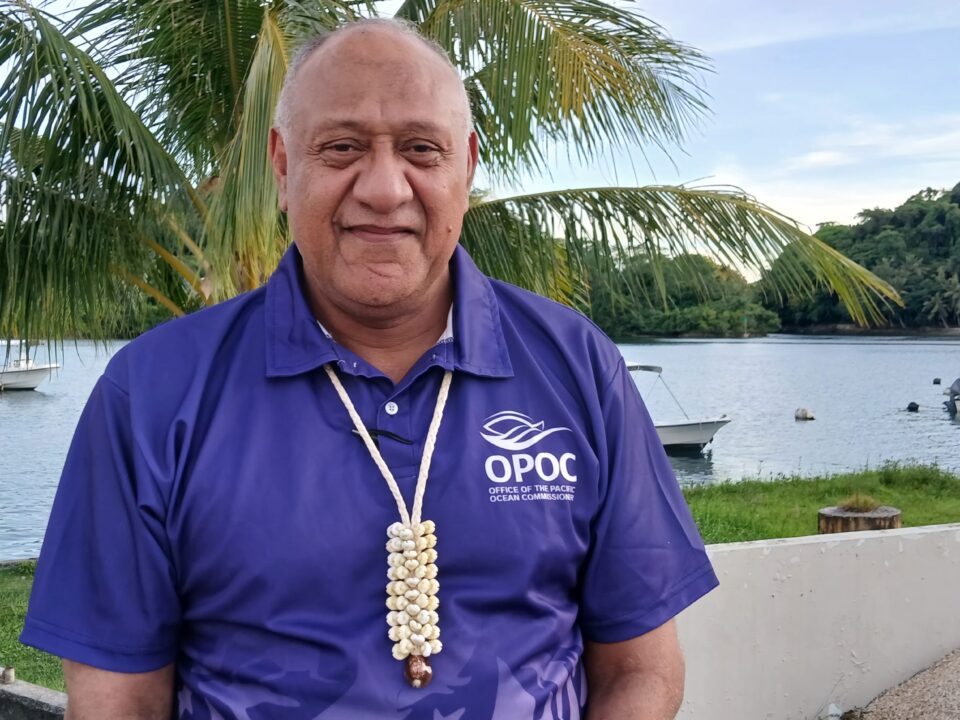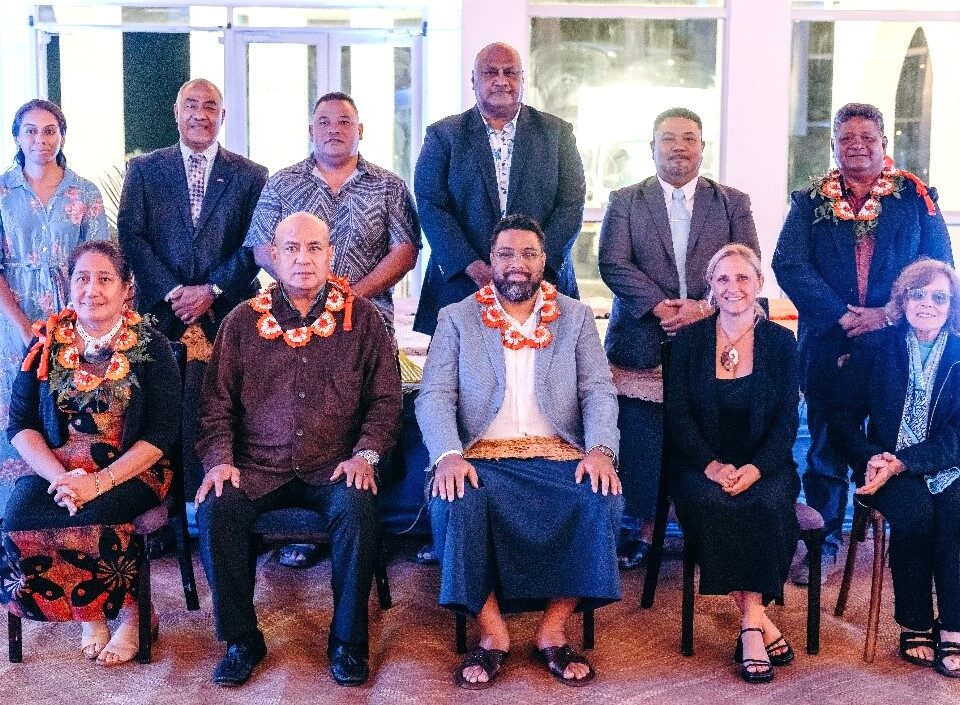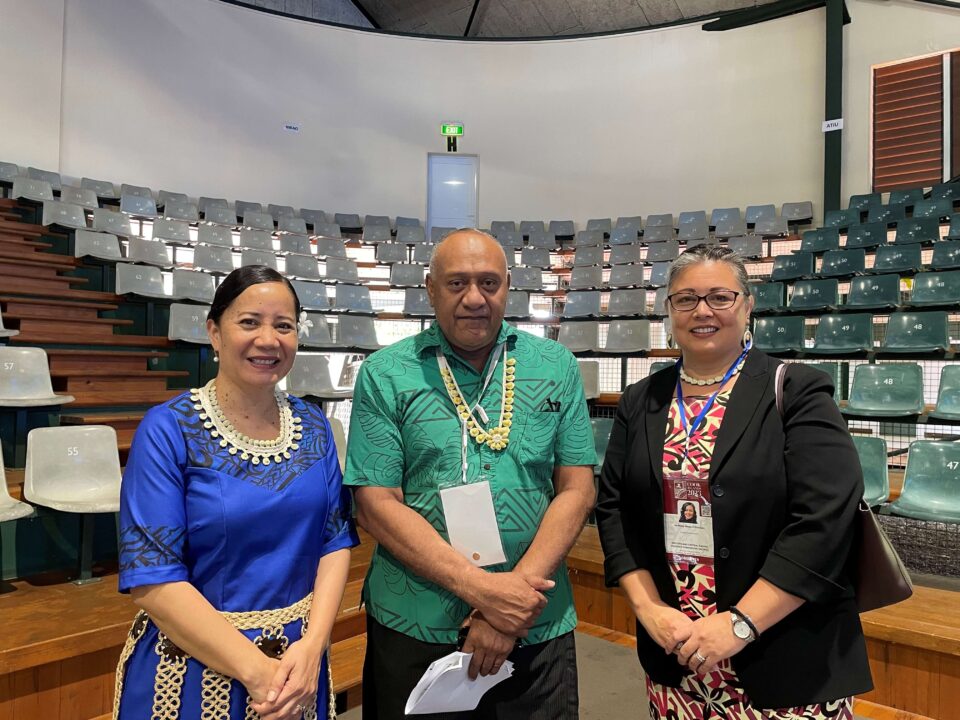
Many Pacific island states are really large ocean states, with vast Exclusive Economic Zones. As local enterprises and overseas corporations seek to exploit the region’s vast ocean resources – from fisheries to deep sea minerals and marine biodiversity – it’s vital to clarify which areas come under the national jurisdiction of which state.
There’s a lot of work, however, to define national boundaries in mid-ocean.
As island leaders discuss the oceans agenda this week, there are still a number of maritime boundaries between Pacific states and territories that have not been finalised in law.
Secretary General of the Pacific Islands Forum Dame Meg Taylor also serves as Pacific Oceans Commissioner. She is seeking more action on this issue at a time that island states successfully lobbied for a Sustainable Development Goal (SDG) on the Oceans and Seas at the United Nations. The Pacific islands played a key role in this success: Fiji co-hosted the first global conference on SDG14 last year, and UN Secretary General António Guterres has appointed Fiji’s former UN ambassador Peter Thomson as the United Nations Special Envoy for the Oceans.
But before taking on the world, Taylor believes the region must get its own house in order,
“We have to ensure our boundaries, to secure all the treaties we need between each other,” she said this week in Nauru. “Out of the 47 boundaries that need to be settled, we have completed 33. We’ve been having conversations directly with leaders about the outstanding maritime boundaries that need to be brought to conclusion, so we can have greater ownership of our region.”
Under the United Nations Convention on the Law of the Sea (UNCLOS), countries need to register “base points” along their coasts. Connecting these as baselines, the state’s territorial sea and Exclusive Economic Zone (EEZ) can be measured and an ocean boundary determined.
Danger of sea-level rise
James Movick is Director General of the Forum Fisheries Agency (FFA). He is soon to complete his term of office, but continues to call on Pacific leaders to look towards the concept of integrated oceans management, to secure the region and know more about the ocean and its resources.
Movick argues that, at a time of rising sea levels, Pacific island countries must act to finalise their maritime boundaries: “Without fixing our maritime boundaries under the current Law of the Sea Convention, we face a serious threat that in the event of sea level rise inundating the baseline point, we could lose that area of jurisdiction.”
Movick said that non-government organisations and UN bodies were now recognising the particular needs of large ocean states, which can have vast EEZs spread over thousands of kilometres: “Just recently, the International Law Association has come out with a recommendation, calling on the Secretary General of the United Nations to recognise the rights of those countries that do face inundation of their baseline points, but to recognise them if they are properly registered. Hopefully that will have some traction in New York.”
One problem facing the region is that are many territories with maritime boundaries alongside independent nations, such as New Caledonia, American Samoa and Tokelau However legal sovereignty over boundaries rests with the administering power, like France and the United States.
For James Movick, this has not stopped progress on finalising treaties in the region: “We’ve not seen that aspect of a metropolitan country – or the colonial status of a territory – being a serious impediment. It’s simply been a matter of getting the work done. There have been several boundaries concluded with the United States and with the French for their territories, but there’s still some remaining work.”
He added: “The difficulty though is that for the metropolitan countries, prioritising their negotiations with the Pacific may be a bit of a problem. They have other more pressing boundary issues or diplomatic issues they may need to resolve.”
Despite this, the United States has completed negotiations for a series of maritime boundary agreements in recent years. Two treaties – one signed with Kiribati in 2013 and other with Federated States of Micronesia in 2014 – were approved by the US Congress in July this year, and await ratification by President Trump. Negotiations between the United States and Tonga have been finalised, with a treaty to be signed soon.
Matthew and Hunter
To support its maritime boundary claims, France maintains an extensive programme of undersea mapping and oceanographic studies. The French government programme ‘Extraplac’ coordinates scientific research and prepares submissions to the United Nations, in order to extend its zones to the limits of the underwater continental shelf.
France’s bid to extend New Caledonia’s continental shelf has been used to justify its claim to Umaenupne (Matthew) and Umaeneag (Hunter) islands. These uninhabited volcanic islands, located to the east of New Caledonia and the south‐east of Vanuatu, are claimed by Vanuatu. There were colonial disputes over the islands, even before the joint French–British condominium of New Hebrides gained independence in 1980. Since then, repeated French assertions of sovereignty have angered governments in Port Vila.
In New Caledonia, the Kanak independence movement Front de Liberation Nationale Kanak et Socialiste (FLNKS) supports Vanuatu’s position in the territorial dispute.
With the 2009 Keamu Agreement, the FLNKS acknowledged that the islands belong to ni‐Vanuatu customary leaders from Tanna. At the time, Victor Tutugoro of the FLNKS joined customary leaders from Tanna to state that “the indigenous Kanak people do not have a traditional history on these islands”, in contrast to customary authorities from Vanuatu’s Tafea province.
At the signing of the Keamu Agreement, Tutugoro described it as “a solemn commitment between the Kanak people and the people of Vanuatu that whatever the political and institutional future of New Caledonia, Matthew and Hunter Islands will remain the property of the people of Vanuatu.”
Speaking to Islands Business at this week’s Forum in Nauru, Vanuatu Foreign Minister Ralph Regenvanu said that there had been a major change of attitude from France towards resolving the longstanding dispute.
“There’s been a breakthrough on our negotiation of a maritime boundary with New Caledonia and with France,” he said. “In the last 12 months, France has finally agreed to come to the table to start negotiations. Those negotiations have now started and we’ve had two meetings. We’ve presented our arguments and our base points and have now received the proposed base points from France.
“Things are progressing well, but we are urging France to continue to maintain a speedy timetable so that we can try and resolve it as strictly as possible. We need the meetings to happen every three months at a minimum.”
The Vanuatu Foreign Minister also welcomed a new engagement with Fiji to discuss outstanding boundary issues.
“Just in the last month, Fiji has agreed to come to the table and start negotiating,” he said. “This is what we’ve been asking for a long time, so it’s good to see. I hope it reflects their commitment to what the Forum leaders decided, which is speeding up the negotiations.”
Published: Islands Business



